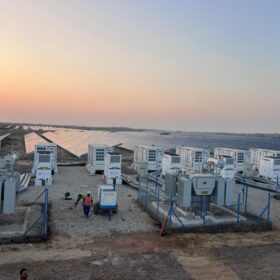After nearly a decade of regulatory uncertainty, India’s electricity sector has finally implemented a major and long-overdue change: the official introduction of ‘Electricity Derivatives (Futures)’. Although this may seem minor, it marks a significant advancement. For years, a fundamental difference of opinion between the country’s main power and financial market regulators prevented these essential tools—commonplace in mature energy markets across Europe and the United States—from being used in India.
This new development is poised to fundamentally reshape India’s extensive energy market. It focuses on introducing modern, market-based principles to manage the often volatile fluctuations in electricity prices and the related financial risks. This article will guide you through the entire story, why this is so important, what caused the lengthy delay, the complex legal battles that led to the decade-long postponement, and what this change now signifies for everyone involved—from the largest power plant operators to major industrial firms and the investors who support them.
The Story So Far….
Historically, India’s electricity market was quite simple, though somewhat inflexible. The entire system relied on long-term Power Purchase Agreements, or PPAs, which are very long, fixed-price contracts. A power generator (a ‘GENCO’) would sign a deal with a state-owned distribution company (a ‘discom’), often lasting 20 or 25 years. This provided essential stability: the power producer had a guaranteed customer at a known price, making it easier to secure bank loans for building power stations. For the discom, it meant a reliable, long-term supply of electricity for its millions of customers.
The main issue with the long-term fixed price PPA was its inflexibility. It was a static system, unable to respond to the changing real-world conditions where electricity demand and generation costs (affected by factors like international coal or gas prices) can shift quickly.
The first major change happened in 2008 with the start of national power exchanges, especially the Indian Energy Exchange (“IEX”), Power Exchange of India Ltd. (“PXIL”), and Hindustan Power Exchange Limited. These exchanges function somewhat like a stock market, but for electricity, and are overseen by the Central Electricity Regulatory Commission (“CERC”), the country’s top power regulator. For the first time, electricity could be bought and sold at prices set by actual supply and demand.
This new, more dynamic market has a few key components:
- Day-Ahead Market (DAM): An auction market in which participants can buy or sell electricity for delivery the next day.
- The Term-Ahead Market (TAM): For contracts that cover longer durations, although historically this was limited to just 11 days.
- The Real-Time Market (RTM): a newer feature designed to quickly address unexpected power needs, with delivery guaranteed within the hour.
However, despite India being the world’s third-largest power market, only about 7% of its electricity needs are met through power exchanges. This contrasts sharply with European energy exchanges, which facilitate nearly 50% of total electricity transactions. Reason: Most spot and forward trades on these power exchanges are delivery-based, requiring actual physical delivery or uptake of power.
What are Electricity Derivatives? And why does it matter?
In simple terms, an electricity derivative is a financial contract that allows you to agree on a future price for electricity without actually buying or selling the physical power itself. It’s similar to taking out an insurance policy against price changes that could harm your business. The value of this financial contract is ‘derived’ from the actual market price of electricity—hence the name.
The most important thing to understand about these derivatives in the Indian context is that they are entirely cash-settled. This is a crucial distinction. It means no trucks deliver electricity, and no power moves through the grid because of the contract. Instead, when the contract ends, the parties simply settle in cash. If you bought a contract agreeing to a future price and the actual market price turns out to be higher, you get a payout for the difference. If the price is lower, you pay the difference.
This is a highly useful mechanism because, unlike other commodities like oil or gas, you can’t store large quantities of electricity cheaply. Therefore, these financial tools are the main way for businesses to hedge against price fluctuations. The prices for these new derivative contracts, such as those traded on the Multi Commodity Exchange of India Ltd. (“MCX”) and the National Stock Exchange of India (“NSE”), are based on the average prices discovered in the very liquid Day-Ahead Market (“DAM”) of the power exchanges.
What took so long?
If it’s so useful, why did it take so long? The answer is a classic story of a bureaucratic turf war between two powerful government regulators: (a) CERC, the power regulator, and (b) the Forward Markets Commission (“FMC”), which used to be the regulator for all commodity trading before its merger into the Securities Exchange Board of India (“SEBI”) in 2015.
- The interesting story began in 2005 when the MCX first asked the FMC for permission to launch forward contracts in electricity. The FMC approved this on January 7, 2009. From the FMC’s point of view, this was entirely legitimate. It was operating under a law called the Forward Contracts (Regulation) Act, 1952 (“FCRA”). This law was enacted by the national parliament under its exclusive constitutional authority to regulate “stock exchanges and futures markets” (as per Entry 48 of List I, the Union List). Additionally, under Section 15 of the FCRA, the Central Government issued a notification designating electricity as a ‘good‘ subject to the Act’s provisions, seemingly providing the FMC with a clear and solid mandate.
- However, CERC viewed the situation very differently. CERC’s claim was based on the Electricity Act, 2003 (“EA 2003”), a comprehensive and modern law enacted under Entry 38 of List III (the Concurrent List). CERC specifically pointed to Section 66of the EA 2003, which requires it to “promote development of a market in power,” a mandate it interpreted as giving it exclusive control over all forms of electricity trading, including derivatives. In a series of counteractions, CERC issued binding orders on April 28, 2009, and January 11, 2010, and introduced its own comprehensive regulations, the CERC (Power Markets) Regulations, 2010, to clearly assert its authority over forward and futures contracts, setting the stage for an unavoidable legal confrontation.
- The Judgment That Created a Vacuum: The Bombay High Court’s Ruling
The escalating dispute culminated in the landmark case of Multi Commodity Exchange of India Ltd. v. Central Electricity Regulatory Commission & Ors., which was brought before the High Court of Judicature at Bombay. In its judgment delivered on February 7, 2011, the High Court carefully examined the two conflicting statutes and identified a “fundamental statutory conflict.” Its decisive and far-reaching conclusion was that “neither the Forward Market Commission (as it then was) nor the Central Electricity Regulatory Commission… had sole or exclusive jurisdiction to regulate and control forward trading/future contracts in electricity.”
The court reasoned that since neither the FCRA nor the EA 2003 contained provisions to oust the jurisdiction of the other, and because both regulators had legitimate claims under their respective acts, an overlap created an untenable legal situation. This ruling effectively established a “regulatory vacuum.” The court declared the relevant portions of the CERC’s 2010 regulations inoperative and stated that exclusive jurisdiction for either body would only be possible if “suitable amendments are made in the concerned regulations.” This judgment had immediate and severe consequences, halting all progress on derivatives and restricting the physical Term-Ahead Market to a maximum duration of just 11 days for the subsequent decade, severely hampering the market’s ability to manage medium-term risk.
- The Breakthrough: How the Supreme Court Found a Practical Solution
The decade-long deadlock was finally broken when the matter, now titled Power Exchange of India Ltd. v. Securities and Exchange Board of India Etc., reached the Supreme Court of India. In its dispositive order dated October 6, 2021, the Supreme Court adopted a notably pragmatic and forward-looking approach. Instead of engaging in a lengthy statutory interpretation to declare one Act superior to the other, the Court chose to “endorse a negotiated settlement“ that had been carefully brokered between the regulators, with active facilitation from the Ministry of Power.
The Court deferred to the policy recommendations developed by the ‘Committee on Efficient Regulation of Electricity Derivatives’, which was created specifically for this purpose. While this approach effectively avoided the need to resolve complex legal questions, it offered a practical and essential way forward. This landmark settlement set clear and unambiguous jurisdictional boundaries, defining regulatory authority based on two key legal tests from the Securities Contracts (Regulation) Act, 1956 (SCRA):
- The Physical Delivery Test:This test states that all “Ready Delivery Contracts“ and “Non-Transferable Specific Delivery (NTSD) Contracts“ related to electricity are solely under the regulatory authority of CERC. An NTSD Contract is precisely defined in the SCRA as a contract that must be settled solely through the physical delivery of the commodity, where the rights and liabilities cannot be transferred, and no party can ‘net out’ or settle its position financially.
- The Transferability Test:This additional test states that all “Commodity Derivatives“ in electricity that are not NTSD Contracts, which means they are transferable and do not require physical delivery, are exclusively regulated by SEBI. This important distinction is what legally allows for financially settled futures and options.
What does this change mean now?
Following the Supreme Court’s order, the regulatory landscape is now clearly defined. CERC continues its crucial oversight of the physical power markets, while SEBI now has undisputed authority over all financially-settled electricity contracts. This clarity has allowed exchanges like the NSE and MCX to introduce their products.
The main product currently is a monthly electricity futures contract, traded under the symbol “ELEC MBL” (meaning Electricity Monthly Base Load). These contracts, which are traded on weekdays from 9:00 AM until late evening, are benchmarked against the volume-weighted average price of the DAM across power exchanges. With a standardized lot size of 50 MWh and a tick size of ₹1 per MWh, they require traders to post an initial margin of 10% (or as determined by the SPAN risk-assessment system) and are fully cash-settled. A wide range of participants—from GENCOs and discoms to large industrial consumers and institutional investors—can now actively participate in this market to hedge financial risks and achieve greater budget certainty.
Who Benefits and How?
The introduction shifts the sector from a state of price uncertainty to one where future costs and revenues can be managed with much greater confidence, offering significant and positive benefits for all major players in the electricity ecosystem.
- For Power Generators (GENCOs): A power generation company operates on a knife’s edge. Its revenues depend on the often-volatile spot price of electricity, while its largest cost i.e. fuel (coal or gas), can fluctuate significantly. A derivative contract helps a generator hedge its sales. By selling a futures contract, it can secure a selling price for its electricity in the coming months. This turns unpredictable revenues into stable, predictable cash flow. This stability is not just comforting; it is essential for better financial planning, easier access to credit, and more confident investments in maintaining and upgrading their power plants.
- For Distribution Companies (discoms): India’s state-owned discoms face a challenging situation. They purchase power on the wholesale market, where prices can spike, but they sell it to consumers at regulated tariffs that are often fixed and subsidized. This gap causes problems during a heatwave when wholesale prices jump, forcing them to buy expensive power and sell it cheaply, which can lead to significant financial losses. Electricity derivatives provide a solution. By buying futures contracts, a discom can secure the cost of part of its future power needs. This offers essential budget stability and protects it from the financial strain of sudden price increases, leading to a more stable and financially sustainable power distribution system.
- For large industrial and commercial consumers: For any large manufacturing business, energy is one of the biggest and most volatile input costs. An unexpected spike in electricity prices can wipe out profit margins, especially for export-oriented businesses that have already quoted prices to international customers. Derivatives allow these large consumers to hedge their energy procurement. By locking in their electricity costs for the next quarter or year, they can achieve cost certainty, which is essential for accurate budgeting, competitive product pricing, and reliable financial forecasting.
- For Investors and Financiers: A sector plagued by volatility is a risky place to invest money. The lack of hedging tools has traditionally made the Indian power sector less attractive for private and foreign capital. A liquid and transparent derivatives market fundamentally alters this risk profile. It offers clear, forward-looking price signals and shows a level of market maturity. This reduces the sector’s risks, encouraging investors to finance vital new projects, from modernizing the grid to building advanced power stations, including in the crucial renewable energy sector.
Conclusion: Weighing the Benefits and Navigating the Risks Forward
The introduction of electricity futures (derivatives) marks a significant step forward in modernizing India’s power market. The benefits are numerous: it offers a strong mechanism for hedging against price fluctuations; promotes more transparent and competitive price discovery; and improves overall market efficiency. By reducing sector risks, it makes the market more attractive for private investment, supporting the crucial infrastructure investments—estimated to reach around $57 billion by 2030 for climate-related projects—that are essential for securing India’s power sector.
However, participants must also be fully aware of the inherent risks. Electricity prices are notoriously volatile, and adverse market movements can cause significant losses. Traders must also manage various types of basis risk, such as location basis risk (where local spot prices differ from the exchange’s benchmark) and time basis risk (when hedging periods do not perfectly match exposure). As a developing market, it may also face initial challenges like limited liquidity.
In conclusion, after a long wait, the introduction of electricity derivatives is a truly transformative moment for India. By offering tools to manage risk and discover prices transparently, this reform will help develop a stronger, more modern, and more investable energy sector aligned with leading international practices. This new chapter promises greater financial stability for all stakeholders, bringing India closer to its vision of “One Nation, One Grid, One Price.”
Praveen Arora is a Partner at BTG Advaya and Ishaan Chopra is an Associate at BTG Advaya.
The views and opinions expressed in this article are the author’s own, and do not necessarily reflect those held by pv magazine.
This content is protected by copyright and may not be reused. If you want to cooperate with us and would like to reuse some of our content, please contact: editors@pv-magazine.com.








By submitting this form you agree to pv magazine using your data for the purposes of publishing your comment.
Your personal data will only be disclosed or otherwise transmitted to third parties for the purposes of spam filtering or if this is necessary for technical maintenance of the website. Any other transfer to third parties will not take place unless this is justified on the basis of applicable data protection regulations or if pv magazine is legally obliged to do so.
You may revoke this consent at any time with effect for the future, in which case your personal data will be deleted immediately. Otherwise, your data will be deleted if pv magazine has processed your request or the purpose of data storage is fulfilled.
Further information on data privacy can be found in our Data Protection Policy.